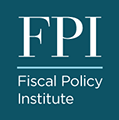Modest Budget Fails to Make Investments Needed to Address Affordability Crisis & Stem Population Loss
Under the fiscal year 2025 executive budget, inflation-adjusted state funding would fall for a third consecutive year. While State spending rose in response to Covid, it will return to its pre-Covid trend by fiscal year 2025.

